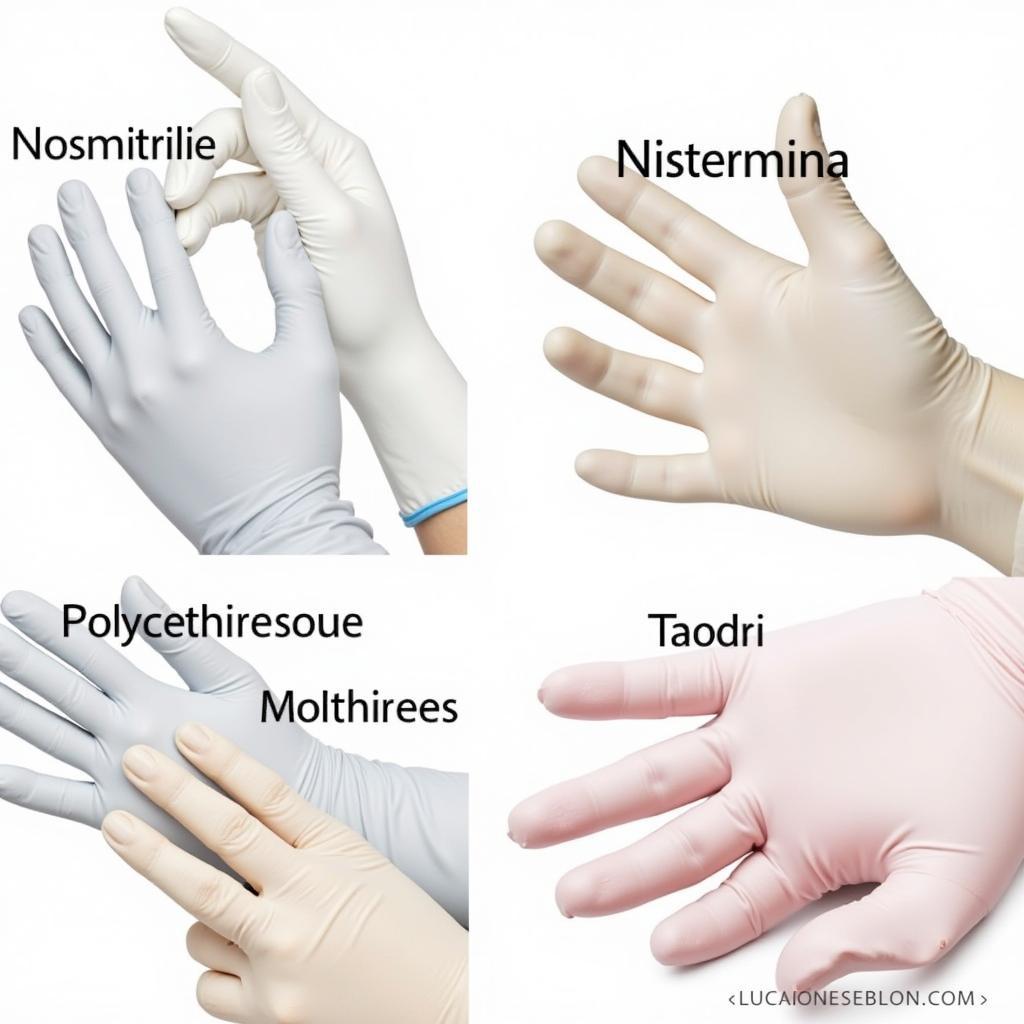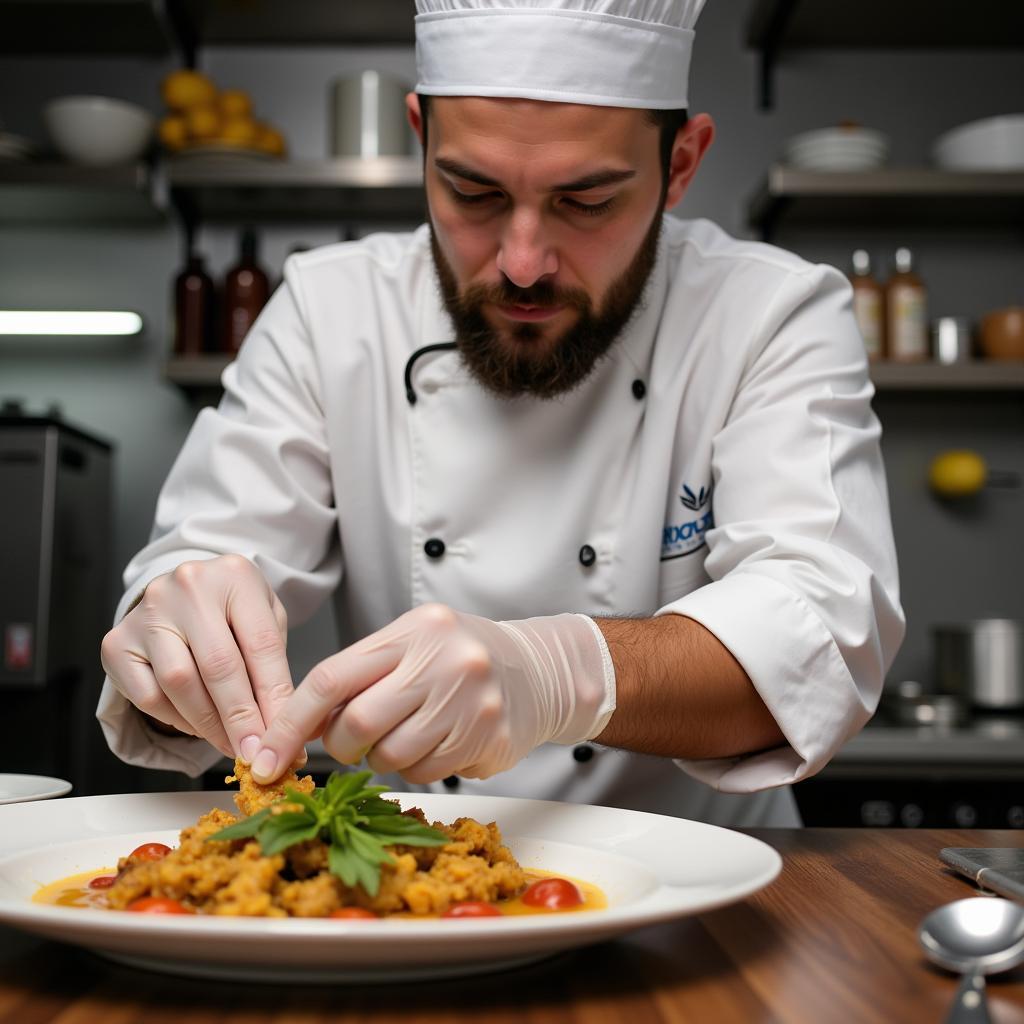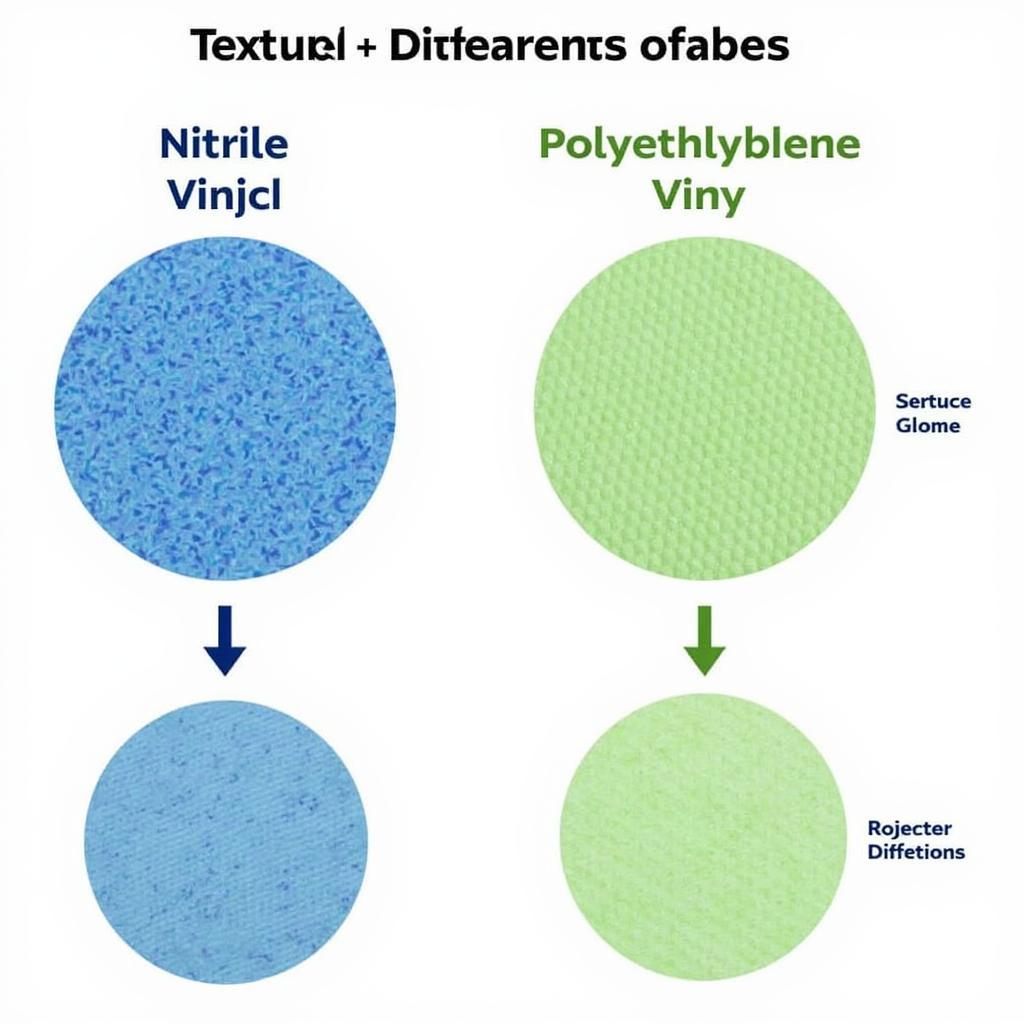Disposable Food Handling Gloves are a non-negotiable in today’s world. They’re a simple yet powerful tool that ensures food safety and hygiene in both professional and home kitchens. But with so many options available, how do you choose the right gloves for your needs? This comprehensive guide will equip you with everything you need to know about disposable food handling gloves, from understanding their importance to choosing the perfect type for your culinary adventures.
 Various types of disposable food handling gloves
Various types of disposable food handling gloves
Why Use Disposable Food Handling Gloves?
Let’s face it, our hands are constantly interacting with the environment, picking up germs and bacteria along the way. When it comes to preparing food, these unseen invaders can easily contaminate what we eat, leading to foodborne illnesses. Here’s where disposable food handling gloves step in as the superheroes of the kitchen:
- Preventing Cross-Contamination: Think of gloves as a barrier between your hands and the food. They stop the transfer of bacteria from your hands to the food and vice versa. This is especially critical when handling raw meat, poultry, and seafood, which are known to harbor harmful bacteria.
- Maintaining Hygiene: Even with frequent handwashing, it’s challenging to completely eliminate germs. Gloves provide an extra layer of protection, ensuring a more hygienic environment for food preparation.
- Reducing the Spread of Germs: Let’s be honest, we’ve all been guilty of a little sneeze or cough while cooking. Gloves act as a shield, preventing the spread of germs from coughs, sneezes, or even minor cuts and sores on your hands.
 Chef using disposable gloves while handling ingredients
Chef using disposable gloves while handling ingredients
Choosing the Right Gloves: Navigating the Options
The world of disposable food handling gloves offers a variety of choices, each with its pros and cons. Understanding the differences can help you make an informed decision:
1. Material Matters:
- Nitrile Gloves: The gold standard! Nitrile gloves are known for their superior puncture resistance, chemical resistance, and durability. They’re also latex-free, making them an excellent choice for individuals with latex allergies.
disposable gloves for food handling are a popular choice for those seeking reliability and protection. - Vinyl Gloves: A budget-friendly option, vinyl gloves are best suited for short-duration tasks that don’t involve heavy handling. They’re less puncture-resistant than nitrile but offer decent protection against light contamination.
- Polyethylene Gloves: Often seen in food trucks and delis, polyethylene gloves are a lightweight, economical choice. They’re best for quick tasks like serving food or handling pre-packaged items.
2. Powder or Powder-Free:
- Powdered Gloves: These contain a light dusting of cornstarch to make them easier to put on and take off. However, the powder can sometimes interfere with food preparation or cause allergic reactions in some individuals.
- Powder-Free Gloves: The preferred choice for food handling as they eliminate the risk of powder contamination. They’re also a safer option for individuals with sensitivities.
 Close-up comparison of nitrile, vinyl, and polyethylene glove materials
Close-up comparison of nitrile, vinyl, and polyethylene glove materials
Tips for Using Disposable Gloves Effectively
Using gloves effectively is just as crucial as choosing the right type. Here are some tips to keep in mind:
- Wash Your Hands: Always wash your hands thoroughly before putting on gloves. This ensures an extra layer of cleanliness and reduces the risk of contamination even if the gloves tear.
- Change Gloves Frequently: Gloves should be changed between tasks, especially after handling raw meat, using cleaning chemicals, or touching your face or hair.
- Don’t Wash and Reuse: Disposable gloves are designed for single use. Washing and reusing them compromises their effectiveness and increases the risk of contamination.
- Proper Disposal: Dispose of used gloves properly in a designated trash receptacle. Avoid touching the outside of the gloves when removing them to prevent the spread of germs.
Beyond the Basics: Additional Considerations
While the information above provides a solid foundation, here are some additional factors to consider when choosing and using disposable food handling gloves:
- Glove Fit: Gloves should fit snugly but not be too tight. Ill-fitting gloves can restrict movement and increase the likelihood of tears.
- Food Sensitivity: If you or someone you’re cooking for has a latex allergy, always opt for nitrile or vinyl gloves, which are latex-free.
- Task Duration: For longer tasks, choose durable gloves like nitrile to ensure continued protection.
- Comfort: Working with gloves for extended periods can be uncomfortable. Choose gloves with a comfortable lining or consider wearing a cotton liner underneath for added comfort.
- Regulations: Familiarize yourself with local health regulations regarding food handling gloves. Some areas may have specific requirements for glove use in food service establishments.
food handling disposable gloves are an essential tool for maintaining a safe and hygienic kitchen. By understanding the different types, choosing wisely, and using them effectively, you can ensure that every meal you prepare is both delicious and safe to eat!
Expert Insight:
“As a professional chef, I can’t stress enough the importance of disposable food handling gloves. They’re non-negotiable in my kitchen. Not only do they protect against cross-contamination, but they also give my customers peace of mind knowing their food is being handled with the utmost care.” – Chef Daniel Miller, Executive Chef at The Culinary Institute
Remember: Food safety is a shared responsibility. By using disposable gloves correctly and following proper food handling practices, we can all contribute to a healthier and happier dining experience.
FAQs About Disposable Food Handling Gloves:
1. Are nitrile gloves safe for all foods?
Yes, nitrile exam gloves food safe for handling all types of food, including oily or acidic foods. They are made from a synthetic rubber that is resistant to chemicals and oils.
2. Can I wash and reuse disposable gloves?
No, disposable gloves are designed for single use only. Washing and reusing them compromises their integrity and increases the risk of contamination.
3. What are the signs that I need to change my gloves?
You should change your gloves immediately if they become torn, punctured, or visibly soiled. It’s also good practice to change gloves between tasks, especially after handling raw meat.
4. Can I use disposable gloves for tasks other than food handling?
Absolutely! Disposable gloves are incredibly versatile and can be used for various tasks, such as cleaning, painting, gardening, or handling chemicals.
5. Where can I buy high-quality disposable food handling gloves?
Mina Cones Food offers a wide selection of high-quality disposable food handling gloves to meet your needs. Visit our website or contact our customer service team for assistance.
Looking for more information on food safety and hygiene?
Check out our article on food grade pvc to learn about safe materials for food contact surfaces.
Need help choosing the right gloves for your needs?
Read our comprehensive guide on gloves for preparing food should be to find the perfect fit for your kitchen.
Have questions or need assistance?
Don’t hesitate to contact Mina Cones Food. Our team of experts is here to help you 24/7. Call us at 02437655121, email us at minacones@gmail.com, or visit our store located at 3PGH+8R9, ĐT70A, thôn Trung, Bắc Từ Liêm, Hà Nội, Việt Nam. We’re committed to providing you with the best products and support for a safer and healthier food experience.